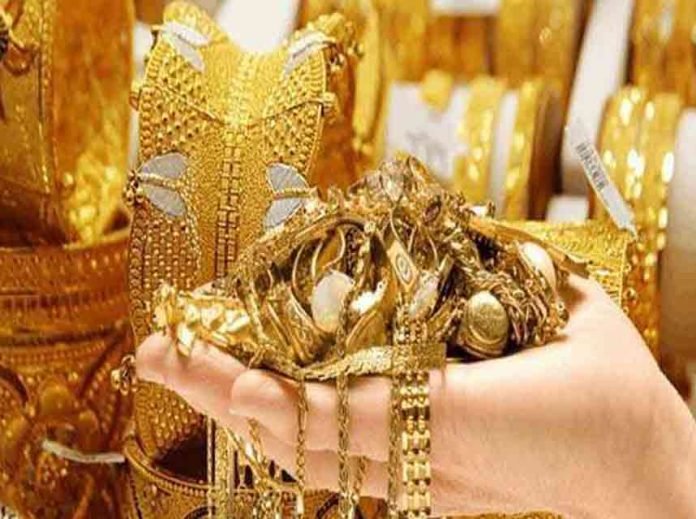Gold prices have recently seen a sharp rise, with the cost of 24-carat gold touching an impressive ₹96,670 for 10 grams, marking an increase of ₹1,760 from the previous price of ₹94,910, according to data from the India Bullion and Jewellers Association (IBJA). With gold nearing the ₹1 lakh mark, many are wondering what has driven this remarkable surge in prices. In this article, we explore the key reasons behind this sudden spike in gold prices and what it means for consumers and investors.
Global Economic Instability: A Catalyst for Gold’s Rise
Gold has long been considered a safe-haven asset during times of economic instability. In recent months, several factors—ranging from global inflation concerns to geopolitical tensions—have contributed to an environment of uncertainty, prompting investors to flock toward gold.
As countries struggle with inflation, fluctuating stock markets, and uncertain economic futures, the demand for gold tends to increase. Gold is widely recognized for its ability to retain value, especially when other forms of investment, such as stocks or bonds, may seem volatile. With fears of a potential recession or market downturn, many investors view gold as a reliable hedge against economic uncertainty, driving up its price.
Impact of a Weakening Indian Rupee
Another crucial factor contributing to the surge in gold prices is the weakening of the Indian Rupee against the US Dollar. As gold is priced in US Dollars globally, any depreciation of the Indian Rupee increases the domestic price of gold. Over recent weeks, the rupee has weakened significantly, making gold more expensive for Indian buyers.
For instance, if the rupee falls in value, buyers in India have to spend more rupees to purchase the same amount of gold. This currency fluctuation has amplified the upward pressure on gold prices, as it becomes costlier in the Indian market despite relatively stable international gold prices.
Increased Demand for Gold Globally and Locally
Gold is in high demand not only in India but across the globe. Central banks, particularly those in emerging markets, have been increasing their gold reserves, seeing it as a safe store of wealth. This growing demand from governments and large institutional investors has had a significant impact on the price of gold.
In India, gold has cultural significance, with strong demand driven by festivals, weddings, and traditions that lead to increased purchases. As we approach key celebratory periods, such as Diwali and wedding season, demand for gold jewelry and investments rises, further pushing up prices.
The Growing Popularity of Gold ETFs
Another contributing factor to the rise in gold prices is the growing popularity of Gold Exchange-Traded Funds (ETFs). These investment products allow investors to buy gold without having to physically hold the metal. Gold ETFs have become a favored vehicle for many institutional investors seeking the stability and value retention that gold provides, especially when faced with stock market volatility.
As more investors shift their portfolios towards gold, the demand for this asset increases, pushing prices higher. Gold ETFs have become an accessible option for those who wish to invest in gold without the logistical concerns of holding physical gold.
Geopolitical Tensions and Market Sentiment
Gold often experiences price increases in response to geopolitical tensions and conflicts. Events such as trade disputes, political instability, and military tensions in various regions tend to drive investors toward gold, which is considered a safe asset during periods of uncertainty.
For example, recent developments in the Middle East, along with global trade wars, have heightened market fears, prompting people to seek safer investments like gold. As geopolitical tensions rise, market sentiment also turns cautious, leading to higher demand for precious metals like gold.
Gold as a Long-Term Investment
Beyond short-term factors, gold continues to be seen as a long-term investment. Unlike other commodities or stocks, gold does not rely on corporate performance or economic cycles to maintain its value. It has consistently retained its worth over centuries, making it a reliable store of wealth for many individuals and families.
In India, where gold is often considered an essential asset for wealth preservation and inheritance, this long-term perspective helps maintain high demand. Gold’s intrinsic value, coupled with the cultural importance of owning gold, ensures that it remains a preferred asset for many Indian investors.
Government Policies and Their Influence on Gold Prices
Government regulations can have a direct impact on the price of gold. For example, changes in import duties or taxation policies related to gold can influence how much consumers need to spend to acquire the metal. Higher import duties can push up gold prices by increasing the cost of importing the metal into India.
India, being one of the largest consumers of gold, is particularly sensitive to policy changes that affect gold’s availability. Recent discussions about import duties on gold have created a certain level of price volatility, as these policies directly impact the cost of gold on the market.
Supply Chain Constraints and Production Delays
Gold mining operations across the world have faced disruptions due to a variety of factors, including labor shortages, environmental challenges, and pandemic-related restrictions. These disruptions have led to delays in gold production, reducing the overall supply in the market.
When supply is limited and demand remains high, the price of gold naturally rises. Supply chain challenges and reduced production output have intensified this issue, causing prices to climb.
Looking Ahead: What to Expect from Gold Prices
As gold prices near the ₹1 lakh per 10 grams mark, the outlook remains uncertain. If the global economy continues to experience instability and the rupee remains weak, gold may see continued price increases. On the other hand, if inflationary pressures subside or global markets stabilize, gold prices could level off.
For those looking to invest in gold, the current market conditions present both opportunities and challenges. While gold has proven to be a reliable long-term investment, short-term price fluctuations are inevitable due to the various factors influencing its value.



















